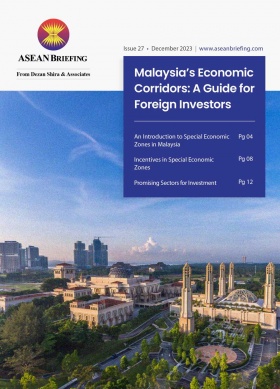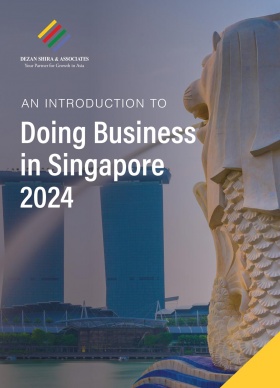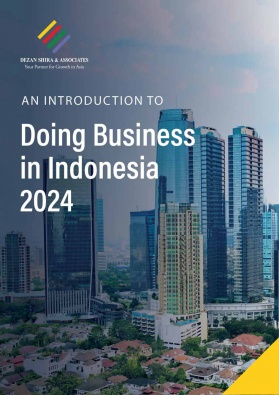Southeast Asia Manufacturing Tracker: Key Insights and Trends
In our manufacturing tracker for Southeast Asia in 2024, we note the PMI values, workforce data, GDP contributions, and policy responses, highlighting the region’s growth opportunities and challenges.
The second edition of The Asia Manufacturing Index by Dezan Shira & Associates is now out. The 2025 index provides essential insights into Asia’s dynamic industrial landscape, ranking eleven countries across eight categories, including tax policies, infrastructure, and innovation. Explore the rankings here.
The manufacturing sector in Southeast Asia is facing a dynamic environment in 2024, shaped by shifting economic conditions, strategic investments, and evolving policies. Countries like Vietnam and Thailand are experiencing moderate growth, buoyed by favorable trade agreements and infrastructure improvements, while Indonesia and Cambodia grapple with external demand pressures and supply chain challenges. This tracker provides a snapshot of current trends, highlighting PMI values, workforce data, and manufacturing’s contribution to GDP.
|
Country |
Main Sectors |
PMI Value (Aug 2024) |
Manufacturing Workforce Size 2023 (in Millions) |
Contribution of Manufacturing to GDP (%) |
Average Wages in Manufacturing 2024 (USD/month) |
|
Indonesia |
Electronics, Automotive, Textiles |
48.9 |
19 |
19.8 |
350 |
|
Vietnam |
Textiles, Electronics, Furniture |
52.4 |
11.96 |
16.4 |
342 |
|
Thailand |
Automotive, Electronics, Food |
52 |
6.26 |
27 |
431 |
|
Malaysia |
Electronics, Palm Oil, Machinery |
49.7 |
2.8 |
22.3 |
797 |
|
Philippines |
Semiconductors, BPO, Food |
51.2 |
3.52 |
21.2 |
555 |
|
Singapore |
Biotech, Electronics, Chemicals |
50.9 |
0.45 |
21.5 |
5,016 |
|
Cambodia |
Textiles, Footwear, Agriculture |
48.9 |
1 |
17.6 |
232 |
Source: Trading Economics, Statista, McKinsey, S&P Global
Indonesia
Indonesia’s manufacturing sector focuses on electronics, automotive, and textiles, with a PMI of 48.9 in August 2024, indicating contraction. Despite a lower PMI, the average monthly wage in manufacturing is US$350 in 2024, reflecting moderate labor costs crucial for maintaining competitiveness. The lower PMI suggests new orders and production output challenges, possibly due to external economic conditions and fluctuating domestic demand.
The sector employs 19 million people and contributes 19.8 percent to GDP.
Vietnam
Vietnam’s manufacturing industry, focusing on textiles, electronics, and furniture, shows growth with a PMI of 52.4 in August 2024. The sector employs around 11.96 million people, contributing 16.4 percent to GDP. The average wage is US$342 per month, reflecting competitive labor costs. Vietnam’s robust PMI and strategic position as a global supply chain hub, particularly in electronics, position it for continued foreign investment and growth.
Thailand
Thailand’s manufacturing sector, including automotive, electronics, and food, shows expansion with a PMI of 52 in August 2024. Employing 6.26 million people, it contributes 27 percent to GDP. Average wages in manufacturing are relatively high at US$431 per month, reflecting the sector’s focus on skilled labor and high-value production.
Thailand’s growth is supported by strong exports in automotive and electronics, despite challenges from regional competition and fluctuating global demand.Malaysia
Malaysia’s manufacturing sector, centered on electronics, palm oil, and machinery, has a PMI of 49.7, suggesting slight contraction or stagnation. It employs 2.8 million people and contributes 22.3 percent to GDP. Average wages are higher than most regional peers at US$797 per month, reflecting the sector’s advanced and diversified nature. Malaysia remains a key player in high-tech manufacturing but faces challenges due to global supply chain disruptions and competition from lower-cost neighbors.
Philippines
The Philippines’ manufacturing sector, including semiconductors, BPO, and food, shows modest growth with a PMI of 51.2 in August 2024, indicating expansion. It employs 3.52 million people and contributes 21.2 percent to GDP. The average wage is US$555 per month, making it competitive for attracting foreign investments in labor-intensive industries. Continued growth will rely on improving industrial capabilities and attracting investment into high-value manufacturing sectors.
Singapore
Singapore’s manufacturing sector, focused on biotech, electronics, and chemicals, has a PMI of 50.9, indicating marginal growth. With a small workforce of 0.45 million, manufacturing still contributes 21.5 percent to GDP. The average wage in the sector is significantly higher at US$5,016 per month, reflecting the high cost of living and advanced nature of manufacturing activities. Singapore remains competitive due to its robust infrastructure, innovation-friendly policies, and skilled labor force.
Cambodia
Cambodia’s manufacturing sector, primarily focused on textiles, footwear, and agriculture, has a PMI of 48.9, signaling contraction. It employs 1 million people and contributes 17.6 percent to GDP. The average wage in manufacturing is US$232 per month, among the lowest in the region, making Cambodia attractive for labor-intensive industries. The lower PMI indicates challenges such as reduced external demand and supply chain disruptions. Future growth will depend on improving infrastructure, and regulatory frameworks, and diversifying its manufacturing base to attract more investment.
Key challenges and notable investment policies
|
Country |
Key Challenges |
Notable Investments/Policy Changes |
|
Indonesia |
Contraction in manufacturing reduced new orders |
New incentives for EV production, investment in nickel smelters |
|
Vietnam |
Weak demand in key export markets, gradual recovery |
Trade agreements, infrastructure development |
|
Thailand |
Continued contraction in manufacturing activity |
Visa-free entry for tourists, monetary policy tightening |
|
Malaysia |
Stagnation with muted trends in new orders and employment |
FDI in electronics, tax incentives for manufacturers |
|
Philippines |
Slower manufacturing growth, strong FDI inflow |
Policy rate cuts to support growth, investment in semiconductors |
|
Singapore |
High labor costs, competitive business environment |
Smart manufacturing incentives, FDI in tech sectors |
|
Cambodia |
Labor laws, investment climate |
Expansion of Special Economic Zones (SEZs) |
Indonesia
Indonesia’s manufacturing sector faces challenges, including a contraction in manufacturing activity and reduced new orders. Despite these issues, the government is implementing new incentives to boost production, particularly in the electric vehicle (EV) sector. Investments in nickel smelters, a critical component for EV batteries, are part of this strategy to position Indonesia as a leader in the global EV supply chain. These policy changes aim to stimulate economic growth, attract foreign investment, and strengthen the country’s manufacturing base, particularly in high-value sectors like electronics and automotive.
Vietnam
Vietnam’s manufacturing sector is experiencing weak demand in key export markets, leading to a gradual recovery phase. To address these challenges, the government is focusing on trade agreements and infrastructure development to boost economic resilience and attract investment. The country’s strategic location and integration into global trade networks, particularly through agreements like the EU-Vietnam Free Trade Agreement (EVFTA), are expected to help stabilize demand and promote growth. Infrastructure improvements aim to enhance connectivity and reduce logistical costs, making Vietnam a more attractive hub for global manufacturers.
Thailand
Thailand’s manufacturing sector is struggling with continued contraction in production activities. To counter these economic challenges, the government has introduced policies such as visa-free entry for tourists to stimulate demand in related industries, including manufacturing. Additionally, monetary policy tightening is underway to stabilize the economy. While these measures may help address short-term economic imbalances, sustained growth will depend on diversifying the manufacturing base and improving competitiveness against regional players.
Malaysia
Malaysia’s manufacturing sector faces stagnation, with muted trends in new orders and employment growth. To address these issues, the government is promoting foreign direct investment (FDI) in electronics and offering tax incentives to manufacturers. These policies aim to attract international capital, boost high-tech manufacturing, and encourage innovation. By focusing on sectors like electronics, Malaysia hopes to maintain its position as a key player in Southeast Asia’s advanced manufacturing landscape, despite global economic uncertainties.
Philippines
The Philippines is dealing with slower manufacturing growth but has seen a strong inflow of foreign direct investment. The government has responded with policy rate cuts to stimulate economic activity and promote growth. Investments in the semiconductor sector are a key focus, given its potential to drive technological advancement and increase export revenues. This dual approach aims to support growth in manufacturing while enhancing the country’s appeal as a destination for high-value investment.
Singapore
Singapore’s manufacturing sector is challenged by high labor costs and a highly competitive business environment. To maintain its position as a leading hub for high-tech industries, the government has introduced smart manufacturing incentives and is actively promoting foreign investment in tech sectors. These measures aim to boost productivity, encourage innovation, and sustain growth in sectors such as biotechnology, electronics, and chemicals, where Singapore remains highly competitive despite regional challenges.
Cambodia
Cambodia’s manufacturing sector, particularly in textiles, footwear, and agriculture, faces challenges related to labor laws and the overall investment climate. To attract more foreign investment, the government is focusing on expanding Special Economic Zones (SEZs). These zones offer favorable tax conditions, improved infrastructure, and simplified regulatory processes, aiming to create a more conducive environment for manufacturers. By addressing regulatory hurdles and improving conditions for investors, Cambodia hopes to enhance its position in the global manufacturing landscape.
Sources: Statista, Trading Economics, Statistics Indonesia, Singapore Department of Statistics, Department of Statistics Malaysia, General Statistics Office of Vietnam, National Statistical Office of Thailand, ASEANstats.
About Us
ASEAN Briefing is one of five regional publications under the Asia Briefing brand. It is supported by Dezan Shira & Associates, a pan-Asia, multi-disciplinary professional services firm that assists foreign investors throughout Asia, including through offices in Jakarta, Indonesia; Singapore; Hanoi, Ho Chi Minh City, and Da Nang in Vietnam; besides our practices in China, Hong Kong SAR, India, Italy, Germany, and USA. We also have partner firms in Malaysia, Bangladesh, the Philippines, Thailand, and Australia.
Please contact us at asean@dezshira.com or visit our website at www.dezshira.com and for a complimentary subscription to ASEAN Briefing’s content products, please click here.
About Us
ASEAN Briefing is produced by Dezan Shira & Associates. The firm assists foreign investors throughout Asia and maintains offices throughout ASEAN, including in Singapore, Hanoi, Ho Chi Minh City, and Da Nang in Vietnam, in addition to Jakarta, in Indonesia. We also have partner firms in Malaysia, the Philippines, and Thailand as well as our practices in China and India. Please contact us at asean@dezshira.com or visit our website at www.dezshira.com.








